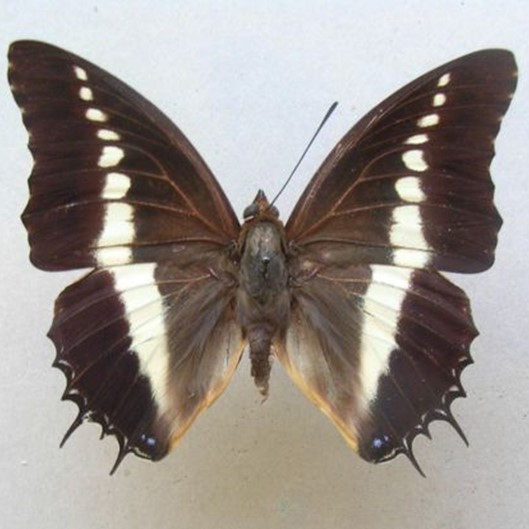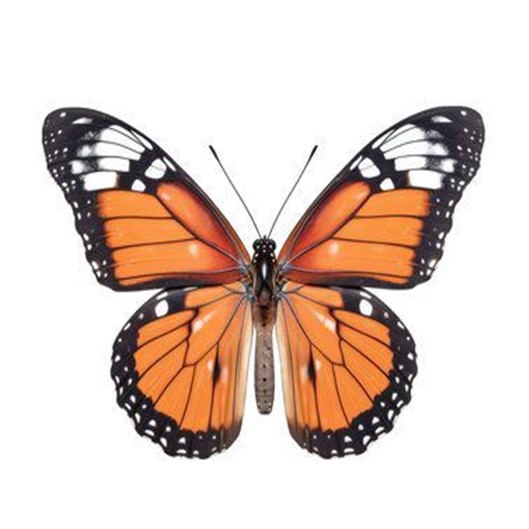As in any other habitat, the Arboretum is home to more insects than any other group of creatures. The insects include a variety of butterflies, ants, termites, cricket, rainbow grasshoppers, Leaf mantids, variety of bees, social wasps, tiger beetles, dragonflies etc. The insects are an integral part of the Arboretum web of life, vitally important food for birds, and through their foraging for nectar and pollen they pollinate tree flowers.
Butterflies
The Nairobi Arboretum is particularly rich in butterflies, a home to over a hundred different species. Butterflies are the adult stage of an insect and feed solely on nectar provided by flowers, or on rotting materials. Many butterflies live in open, sunny areas exhibiting a variety of colours, others stay high up in the trees canopy, or low down close to the ground in the open areas. Also, some are found in open grassy area or along the paths, or deep inside the forest. Some common butterflies include:
Green-banded swallowtail (Papilio phorcas)

These butterflies are often dark, with a vivid band of apple green across the wings and flashes of bright colour. They are well camouflaged, blending in with the dapple shade and sunlight below the canopy. They sip nectar from tree blossoms high in the canopy. The females prefers to lay eggs on Vepris simplicifolia (Teclea) trees in the Arboretum, or the closely related citrus trees which are now commonly found in farms.
The charaxes – Emperor butterflies
The Charaxes referring to the pointed ‘tails’ on the hind wing. This is a group of fast-flying Emperor butterflies, from the genus Charaxes. Some of the Charaxes that can be seen in the Arboretum with a little patience, includes the pearl emperor, (Charaxes varanes) Green-veined Emperor (Charaxes candiope), White-barred (Charaxes brutus), Black-bordered (Charaxes pollux) and Blue spotted charaxes. They often stay high up in the trees and love overripe fruit and will gather on it as well as where sap is dripping from trees.



The most common Emperor butterfly in the Arboretum is the Green-veined charaxes, whose larvae live and feed on the leaves of the most common trees throughout Nairobi. All the large Charaxes, with powerful bodies, are well equipped to fly fast through the forest canopy before a bird makes a meal of them. The leading edge of the forewing of Charaxes butterflies is often serrated and the butterflies jostle and wrestle with each other over rights to food.
Mother-of-pearl (Salamis parhassus)

This lovely butterfly with iridescent pink-green wings is common after the rains. It has a wingspan ranging from 65 to 90 millimeters and is characterized by its greenish-white or pearly white wings with a violet sheen, red eyespots, and black spots near the wing margins. These butterflies are among the species that are raised on butterfly farms found for display in the exhibits around the world. This form of sustainable agriculture helps protect natural forest habitats from destruction, promote local economic growth and supporting the livelihoods of people living around forests
African monarch or Queen butterfly
Danaus chrysippus

This is striking black-and-orange medium-sized butterfly seen flying lazily about on sunny mornings. These butterflies consume poisonous plants like milkweeds, that contain toxic compounds. This makes them unpalatable to most predators. Some other butterfly species also often consume and store these plants, or mimic African monarch colouration to protect themselves from predators. Females lay eggs singly on the underside of the leaves of a larval food plant. The eggs are most often laid close to the ground. Male and female butterflies look very similar, are also similar in size and obtain nectar from various flowering plants
Other insects
The Ants and termites help keep the trees healthy by turning over soil and recycling nutrients. Common in the Arboretum are Harvester ants, Sugar ants and sometimes even the voracious ‘siafu’, Safari ants. In the evening, loud chirping of the Crickets; can be heard with the males calling to females.
Grasshoppers are commonly seen hopping across the open grassy areas. Most common is the striking Rainbow grasshoppers that fly with their red wings displayed. Less noticeable are the cryptic Leaf mantids. They hunt unsuspecting insects amongst the bushes.
A variety of bees, wasps and flies are seen also hovering over the flowers in search for nectar. In addition to Honeybees, there are tiny Stingless bees as well as large, noisy Carpenter bees. Wasps hunt caterpillars in the bushes, and excavate nests in the soft soil along paths. Social wasps are regularly seen inside notice boards! Beware their sting!
Beetles are everywhere. In fact, they are so diverse, every fifth living thing is a kind of beetle. Some hunt, like the iridescent Tiger beetles, others eat flowers and leaves, like the Rose beetles. Brightly coloured Dragonflies patrol the Central Lawn and the river. Their nymphs live in water before they mature and take to the air.